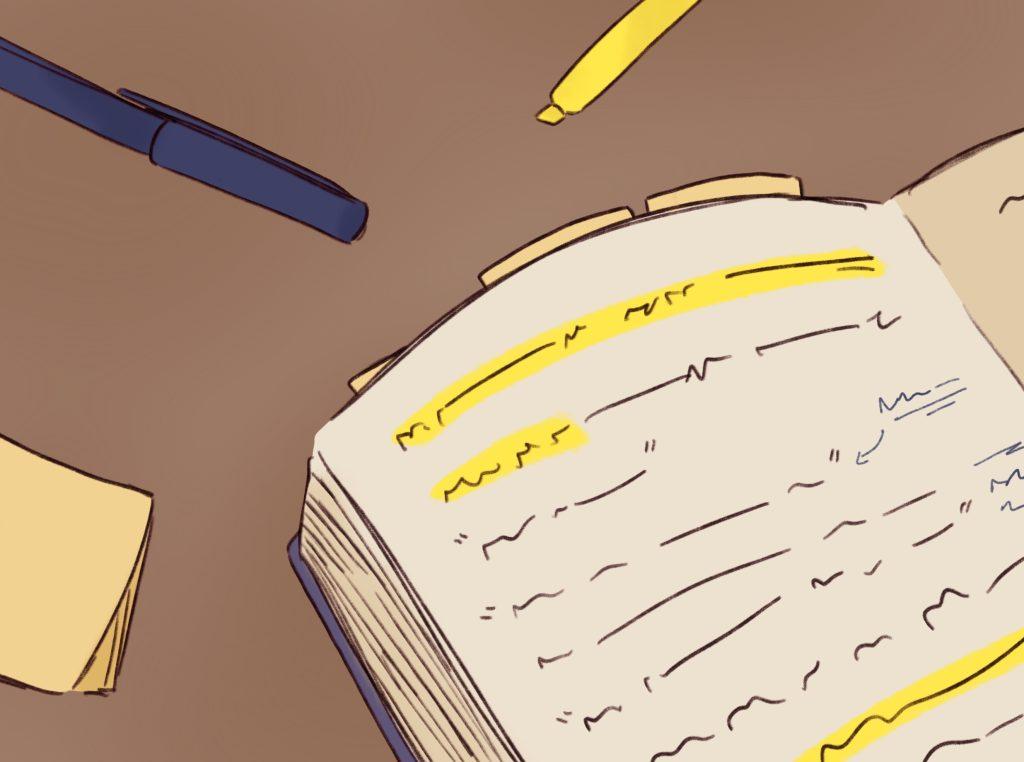
Transparency Item: The Perspectives section of the Graphic is comprised of articles based on opinion. This is the opinion and perspective of the writer.
Buying brand new books from Barnes and Noble is such a satisfying experience, taking home novels with clean pages and a lack of crease marks from overuse.
My arms would be full of new books as I’d walk into my English classes during high school. I couldn’t wait to crack each book open and enjoy how new they were.
Much to my dismay, I soon discovered that the teachers required us to…deface them?
Well, deface is too extreme of a word, but the general idea of annotating books horrified me. Flipping through freshly printed pages and being required to smother them in highlighter streaks and dog-ear the crisp edges, stripping the book of its purity.
I could never bring myself to annotate any of the books. I’d just read the story and keep all the “necessary details” stowed away in the cabinets of my mind. They needed to stay pure and untouched.
However, my perspective on annotating changed after borrowing a book from my AP Literature teacher. She very graciously lent me the novel “Feed.”
Flipping through her copy, I couldn’t help but notice her annotations — neatly highlighted and bracketed sections, sticky notes lining the pages. Her written thoughts even inspired me to start separately writing observations of my own.
An epiphany struck me, and I realized I’d been wrongfully hating on the action of annotating. I decided to test it out for myself, starting with a copy of “The Picture of Dorian Gray,” a story loaded with themes and symbolism.
The main reason for people to annotate is that it helps with memory and comprehension.
When annotating a book, one is sorting out the main points of the text through highlighting, underlining, etc. Annotating should help show the author’s main points, areas of focus and changes in the message of the text, according to the Writers’ Center.
The reader is now able to remember what the text is about since they’ve summarized the main point of the story. It’s established in a few sentences instead of a whole chunk of text.
When taking notes and making annotations, the brain creates new pathways to store the new information it’s been given, according to Cult of Pedagogy. As opposed to glancing through the text and quickly forgetting the content, actively searching and writing notes drills the content into one’s mind.
Along with memory and comprehension, making annotations allows one to create a special bond with their reading.
As someone marks up their book, specific themes and symbols in the story become clearer. People are then able to further understand the text and dig up hidden meanings and draw conclusions behind what they believe the story is about.
As someone writes down their thoughts, they “think more deeply about what they’re reading,” according to Struggling Bookaholic.
I recently annotated a copy of “The Outsiders,” marking up bits and pieces that helped me delve further into the theme of preserving childhood innocence. I discovered a lot more hiding in the writing compared to the first time I read it, surprised by how much of the text alluded to childhood innocence.
When rereading a book, having it annotated is a great way to look back at past thoughts and reactions to the story.
In the moment, people write their reactions and emotions to events that occur in the book. Then, months or years later, they reread that same book and are able to relive the emotions they once felt.
An annotated book is sort of like a time capsule. “It’s about preserving that feeling you had for yourself,” according to Mollie Reads.
I couldn’t help but flip through my copy of “East of Eden” from my senior year. I hadn’t completely marked it up, but, looking at the bits that were highlighted, it reminded me of the exhilaration I once felt when making connections between Biblical allusions.
It’s painful to begin marking up a freshly printed book. However, the feeling of delving into the story, armed with sticky notes and highlighters, is something that can’t be rivaled.
___________________
Follow the Graphic on X: @PeppGraphic
Contact Adri Sahakian via email: adri.sahakian@pepperdine.edu or by Instagram: @mouseratstan

